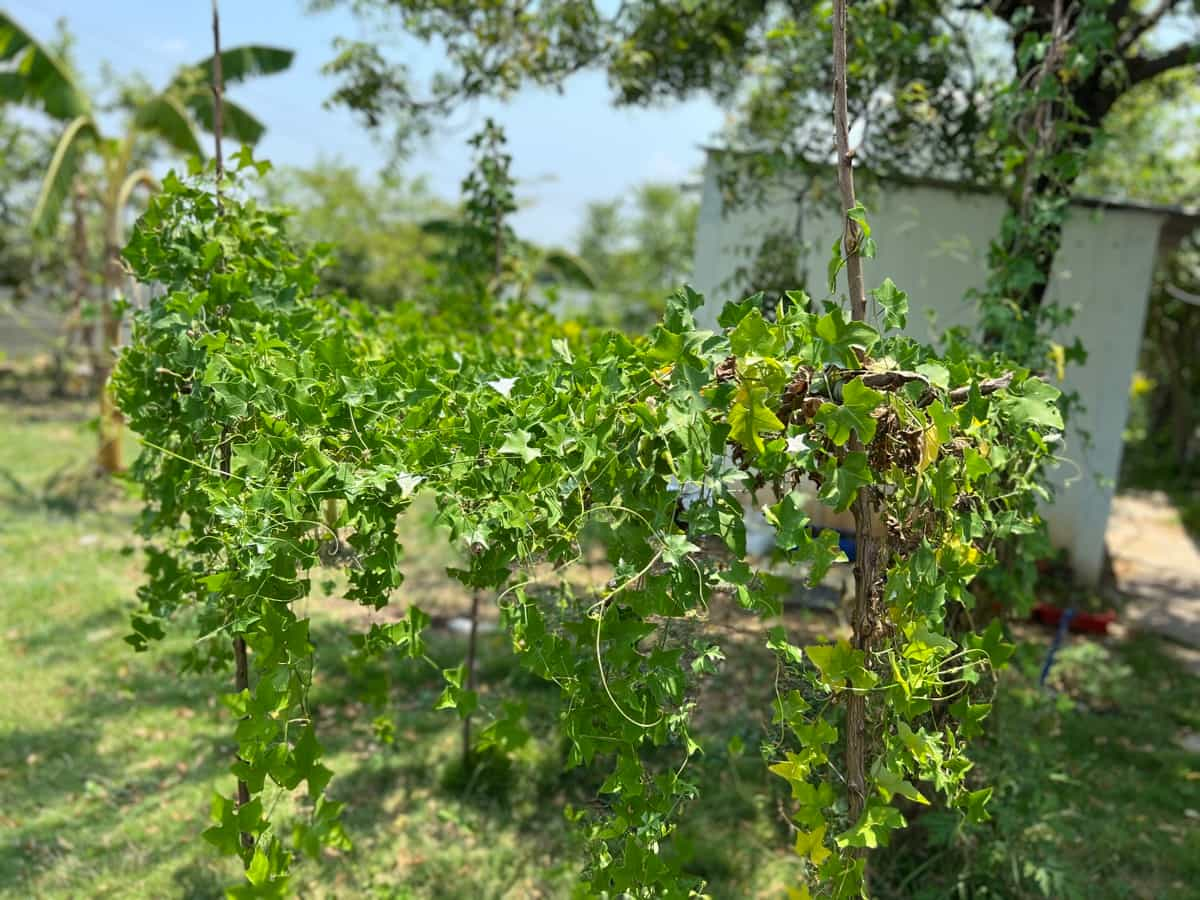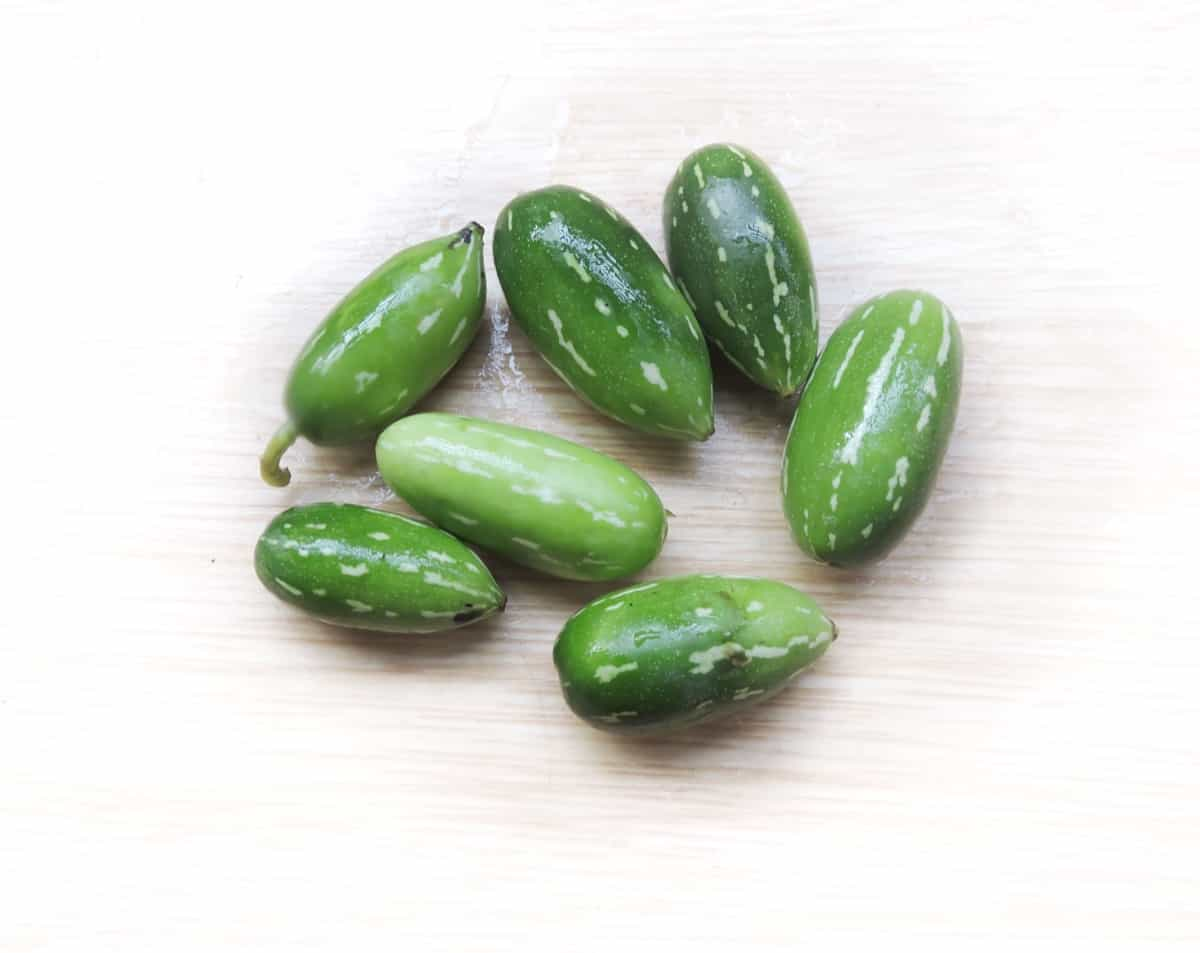In horticulture, an exciting and critical process is the pollination of plants. Understanding pollination is integral to fostering growth and producing a fruitful yield, especially when it comes to unique and intriguing specimens like the Ivy Gourd. This comprehensive guide will elucidate all facets of Ivy Gourd pollination, whether by hand or natural means.

You might wonder, ‘How do you hand pollinate gourds?’ or ‘What’s the role of insects in pollinating the Ivy Gourd?’ This article answers questions about pollination, exploring best practices, timing, and challenges in the process.
How to Pollinate Ivy Gourd Flowers
Methods for Hand Pollination of Ivy Gourd
Hand pollination of Ivy Gourd is an effective approach, often adopted to increase the chance of successful pollination. This method manually transfers pollen from the male flower to the female one. The process starts by identifying the male and female flowers. Male flowers usually have a long, slender stem, while female flowers feature a tiny bulbous structure at the base. Hand pollination should ideally occur early in the morning when the flowers are fully open.
Use a small brush or cotton swab to carefully gather pollen from the male flower by brushing it against the anther, which is the pollen-producing part of the flower. Then, carefully transfer the collected pollen to the stigma, the receptive part of the female flower. This manual pollination process is easy yet requires precision to avoid damaging the delicate flowers.
Natural Pollination Techniques for Ivy Gourd
Natural pollination of Ivy Gourd typically occurs via insects, predominantly bees. Pollinators unintentionally transport pollen from male flowers to female flowers while gathering nectar, aiding in fertilization. However, promoting natural pollination isn’t just about leaving it to the local insect population.
It involves a series of practices like maintaining a diversity of plants in your garden to attract pollinators, abstaining from using pesticides, and providing habitats for pollinators such as insect hotels. Providing a shallow water source can also be beneficial, as pollinators require water for survival. Natural pollination is a fascinating process, and contributing to this ecological cycle brings a sense of fulfillment.
The Importance of Pollinating Ivy Gourd Plants
Like all flowering plants, Ivy Gourd plants require pollination to reproduce and yield fruit. Pollination involves the transfer of pollen from male to female flowers, a crucial step in producing seeds within the fruit. Inadequate pollination can lead to poor fruit development or even failure to produce fruit. Hence, ensuring effective pollination through hand or natural methods is paramount to attain a successful Ivy Gourd yield. Proper pollination also improves the quality of the fruit, influencing its size, shape, and taste.
Step-by-step Guide to Pollinating Ivy Gourd
Initiate the pollination process by identifying the male and female flowers. Male flowers are found on long, slender stems, while a small bulb at the base distinguishes female flowers. Early morning, when the flowers are fully open, is the ideal time for pollination. For hand pollination, use a small brush or cotton swab to collect pollen from the anther of the male flower gently. Then, carefully transfer the pollen to the stigma of the female flower.
If you rely on natural pollination, ensure your garden has diverse plants to attract a wide range of pollinators. Refrain from using pesticides that can harm these pollinators. Provide habitats for pollinators and a shallow water source. Monitoring the garden regularly for signs of successful pollination, such as the development of fruits, will help gauge the effectiveness of your pollination efforts.
Best Practices for Successful Ivy Gourd Pollination
To achieve successful Ivy Gourd pollination, maintaining a healthy plant is crucial. Ensure the Ivy Gourd is well-watered and receives adequate sunlight. Be vigilant about potential pests and diseases that may affect your plant’s health and its ability to produce viable flowers.
In case you missed it: How to Grow and Care for Swedish Ivy: Planting Instructions

For hand pollination, be gentle to avoid damaging the flowers. Using the right tools, like a small paintbrush or cotton swab, can make the process easier and more effective. For natural pollination, maintain a diverse garden ecosystem to attract a range of pollinators and provide suitable habitats and water sources for them.
Tools and Equipment for Hand Pollinating Ivy Gourd
For hand-pollinating Ivy Gourd, minimal equipment is required. A small, soft brush or cotton swab is enough to collect and transfer pollen. The brush or swab should be clean to ensure that only the intended pollen is transferred and that no damage is caused to the flowers. Some gardeners also prefer to wear gloves during the process to prevent any contamination from their hands. Apart from this, keen observation skills and gentle handling are the most important tools you can equip yourself with during hand pollination.
Common Challenges in Pollinating Ivy Gourd and How to Overcome Them
Despite best efforts, several challenges may arise in pollinating Ivy Gourd. These can include a lack of pollinators in the case of natural pollination or difficulty in identifying male and female flowers for hand pollination. To overcome these challenges, maintaining a diverse garden to attract pollinators or learning to identify different flower types through resources and practice can be beneficial.
Furthermore, unfavorable weather conditions, such as heavy rains or winds, can disrupt pollination. Protecting the plants during harsh weather can mitigate this issue. Regular monitoring and timely intervention are essential in overcoming any obstacles encountered during pollination.
Timing and Frequency of Pollination for Optimal Ivy Gourd Yield
Timing is key in the pollination process. Ivy Gourd flowers generally open early in the morning, making this the optimal time for hand pollination. Natural pollinators are also usually most active during this period. Regarding frequency, it is advisable to pollinate as many flowers as possible whenever they bloom. Regularly monitor your Ivy Gourd plant to identify new flowers and ensure they are pollinated promptly. This will maximize the chances of successful fruit development and thus increase the overall yield of your Ivy Gourd plant.
The Role of Insects in Pollinating Ivy Gourd
Insects, particularly bees, play an invaluable role in pollinating Ivy Gourd. While gathering nectar from the flowers, these pollinators inadvertently pick up pollen on their bodies which gets transferred to other flowers, leading to pollination. This natural process is essential in maintaining plant biodiversity and promoting a healthy and productive garden ecosystem.
In case you missed it: 7 Common Problems with Ivy Gourd Plants: Treatment and Solutions

As a gardener, it is important to encourage the presence of these beneficial insects by providing suitable habitats, maintaining a diversity of plants, and refraining from harmful pesticides. This not only aids in the natural pollination of your Ivy Gourd but also supports the local insect population and overall biodiversity.
Benefits of Proper Pollination on Ivy Gourd Fruit Quality
Proper pollination has a significant impact on Ivy Gourd fruit quality. It increases the likelihood of successful fruit development, influences the size and shape of the fruit, and enhances the taste. Without effective pollination, the Ivy Gourd plant may produce fewer fruits or fruits that are smaller and less tasty. By ensuring regular and effective pollination, either naturally or by hand, you can optimize the yield and quality of your Ivy Gourd crop, reaping the rewards of your careful cultivation.
- Feed Your Flock for Less: Top 10 Tips to Save on Chicken Feed
- Ultimate Guide to Ossabaw Island Hog: Breeding, Raising, Diet, and Care
- Hatching Answers: The Top 10 Reasons Your Chickens Aren’t Laying Eggs
- Eggs and Economics: Breaking Down the Cost of Raising Backyard Chickens
- Defend Your Greens: Proven Methods to Keep Iguanas Out of Your Garden
- Ultimate Guide to Cinnamon Queen Chicken: A Comprehensive Guide for Beginners
- Ultimate Guide to California Tan Chicken: Breeding, Raising, Diet, Egg-Production and Care
- Ultimate Guide to Marsh Daisy Chicken: Breeding, Raising, Diet, and Care
- 10 Types of Chicken Farming Businesses You Can Start for Profits